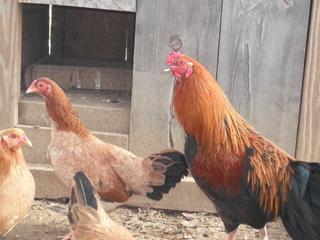- Jun 19, 2010
- 357
- 14
- 100
The two cock birds shown have, for my eye, the sort of beak we want to see on these guys. And the girls too. That short, boxy finch like beak just helps visually finish off the head and face, as though it adds expression to the birds. I don't know if there's a WHY to this being the desired beak except for appearances sake. Have never seen or heard of legs like that on Cubalaya. When my wife had black Cochins yellow leg color wasn't the best trait in her major family line. There was some infusion of good leg color from a second family and some, including pures from the lesser leg color folks, came with a sort of mottled appearance. That's as close to these legs as I have gotten.




